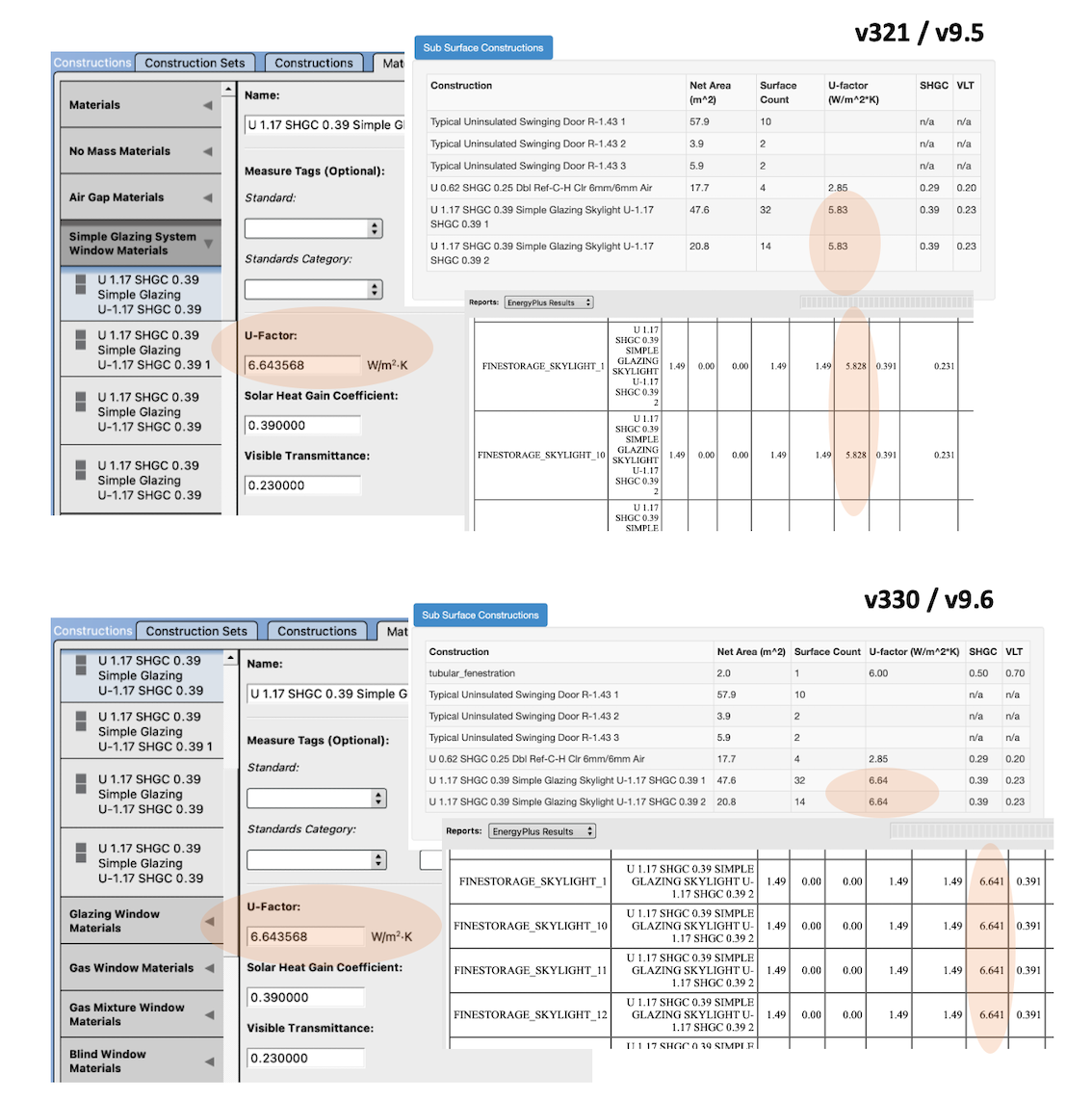U-Value for Simple Glazing in OpenStudio Results
I am entering Simple Glazing with U-1.22, SHGC-0.25 and VT-0.275 for my window construction. The OpenStudio Results popping out in OpenStudio Application 1.2.1 report this with U-1.03, SHGC-0.25, VT-0.28, so the U-value is a bit off - and the VT-value rounded, I suppose. I reviewed https://bigladdersoftware.com/epx/doc... trying to understand why, but the approach discussed there (Rw = 1/U - Ri - Re) gives a Uw-value (1 over Rw-value) MUCH lower than even 1.03, so this 1.03 is probably not even the Uw-value. Any thoughts?





